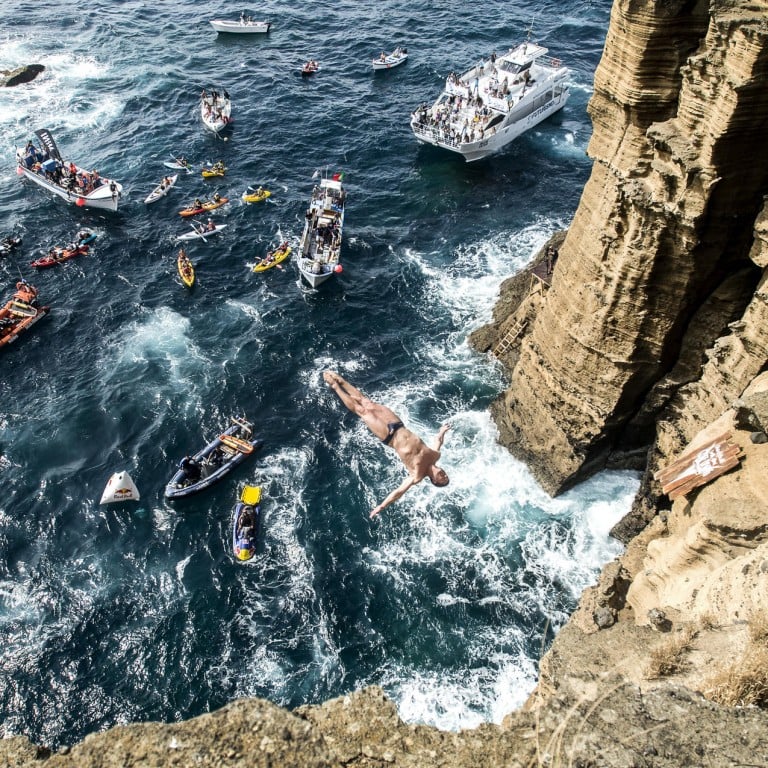Cliff diving is taking off as the more daring seek an adrenaline rush amid a picturesque backdrop

Cliff diving is taking off as the more daring seek an adrenaline rush amid a picturesque backdrop
American Rachelle Simpson, winner of the first ever Red Bull Women's World Series cliff-diving championship held last year, says, "cliff diving has so many exciting things to offer".
"From the amazing locations all over the world, to the rush that overtakes you as you speed towards the water. If you are brave enough to take the plunge, you join an exclusive group of only a few hundred in the world."
The first recorded cliff dive in history took place in 1770, when a Hawaiian king named Kahekili leapt from a 19-metre cliff in Maui and earned the nickname "birdman". After attempting this feat, the king made his warriors jump off cliffs as a test of courage. Until lately, cliff diving remained a largely touristic spectacle, made popular around the 1930s by a group of professional high divers known as La Quebrada Cliff Divers who perform daily jumps of as high as 35 metres from the cliff of La Quebrada in Acapulco, Mexico.

But this changed around 2009, when Red Bull organised the Cliff Diving World Series - an annual procession of competitions in different locations around the globe, featuring some of the world's best professional and Olympian high divers. This event has pushed cliff diving to new heights, and participating athletes have increased the difficulty level of high diving to an extent that was not even thought of a few years ago. It is an event at the Fédération Internationale de Natation (FINA) World Championships, and will potentially become a diving event in the Olympics.
Not only is cliff diving one of the most thrilling burgeoning professional sporting events today, it also gives aspiring and professional divers a great reason to travel to gorgeous destinations with spectacular natural scenery.
American stuntman and Red Bull diver Kent De Mond says the thrill starts at the base of cliff. "When you are standing on ground level and looking up at what you are going to be diving off, the adrenaline starts to kick in. Depending on how you get up to the diving-off point - it may be by a hiking trail, a ladder, rappelling or some good old-fashioned rock climbing - that presents an adventure in itself," says De Mond, whose top spot is Italy's Amalfi Coast. "Here, there are beautiful small towns, with cliffs everywhere. Cliff diving is almost part of daily life. If you have any sort of rock climbing experience, you can climb kilometres of coastline. Sometimes, you can even climb up someone's stairwell to jump off their balcony into the Mediterranean Sea."


At present, there aren't many guides or instructors for cliff diving. "Many of the professional cliff divers do not even have a designated coach because the sport is so new on the professional level. Your best bet for instruction is to go to a pool with an experienced high diving coach and learn the basics of platform diving in a controlled setting before taking to the cliffs," De Mond adds. "Possibly in the coming years there will be more and more cliff diving instructors, but as of now, the only cliff diving instructors are regular diving coaches that know about cliff diving, as well as former and current cliff divers."
If you'd like to try a tamer version of the sport, head to Krabi or Koh Tao in Thailand, the islands of Mallorca, Indonesia, Jamaica or Ibiza where you can find instructors who will show you how to jump safely, feet-first from lower and safer heights. "The problem for novice divers is body control in the air. Injuries can happen from low heights when hitting the water at the wrong angle and body alignment. However, a good rule of thumb is five metres high and five metres deep. Once you master jumps from five metres, going up to 10 metres shouldn't be a problem," says David Colturi, former United States national diving champion and Red Bull World Series diver.